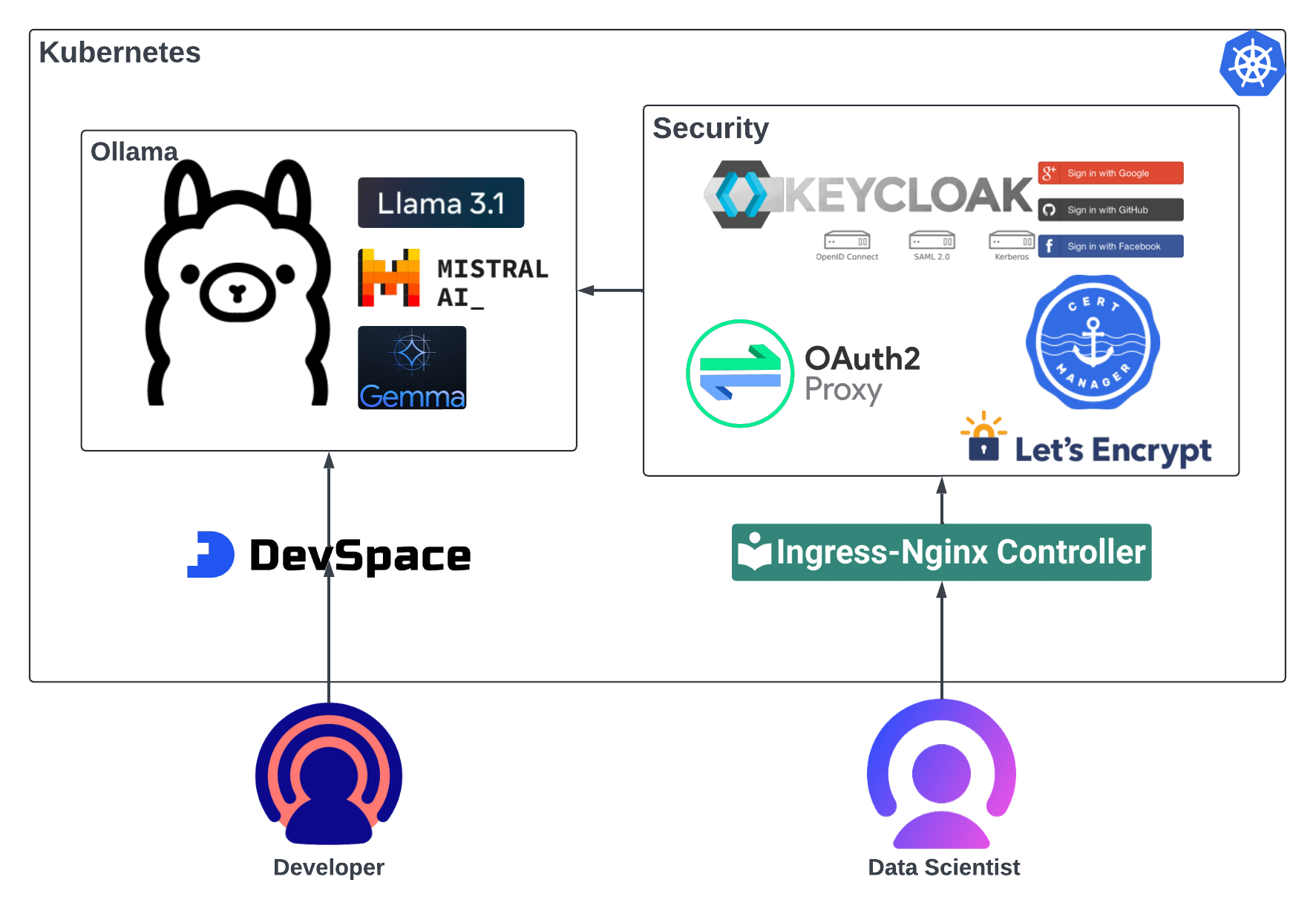
A Comprehensive Guide to Essential Kubernetes Tools in 2024
When people think of Kubernetes, they often link it to the many contributors and projects related to the technology. The Cloud Native Computing Foundation (CNCF) is one of the important contributors to elevating the container orchestration system’s potential.
One of the great assets of the CNCF is their landscape showing the many tools and resources that are currently available to developers. While not entirely comprehensive, understanding this landscape provides you with knowledge on how to best manage cloud-native applications. These tools and resources vary in their delivery, coverage, and capabilities for different aspects of cloud-native development.
Knowing how to find and use the right tools for software development is a critically important skill in 2024. The amount of choices within and beyond the landscape also demonstrates the challenge associated with this task. The right choice of tools can greatly affect the efficiency, security, and performance of your software development environment. Understanding how to identify the best tools and projects is therefore a critical factor for the long-term success of your development strategies.
In this guide, we highlight key components and tools to consider when evaluating your Kubernetes journey. These are, in our opinion, the best open-source tools currently available in the CNCF landscape. We also touch on a couple of tools that are just as useful, but not found within the landscape. Overall, the noted tools are proven to assist you in developing an enterprise-grade Kubernetes system that will be both more capable and secure.
Ingress Platform

An ingress platform in Kubernetes is an API object and related features that are ultimately responsible for managing external access to the services in a cluster, typically via HTTP and HTTPS. An important consideration when building a Kubernetes management solution is its ability to provide routing, load balancing, and SSL/TLS termination, which are essential for secure and efficient traffic management.
An ingress platform should be considered in the early stages of a Kubernetes build, ideally during the architecture planning phase, to ensure proper routing and security measures are integrated from the start. Cert-manager, externalDNS, and Nginx Ingress are three tools that are quite suitable to be used in combination to form a light, yet fully functional ingress platform.
Cert-manager
Cert-manager is a helpful tool found within the CNCF landscape that manages certificates in Kubernetes. It automates the process of issuing, renewing, and using certificates from trusted certificate authorities.
This capability is crucial for securing communication between services in a Kubernetes cluster. Cert-manager supports multiple certificate authorities, providing versatility and flexibility in certificate management.
ExternalDNS
ExternalDNS is a valuable tool that primarily aids in DNS management. Being an open-source project, the official website for ExternalDNS is hosted on GitHub. Within its GitHub page or repository, you can find comprehensive information about ExternalDNS, including its functionality, usage, and contributions to the project.
ExternalDNS automates Kubernetes ingress DNS configurations, simplifying the process of associating domain names with Kubernetes resources. This feature enables seamless access to Kubernetes-hosted applications using familiar domain names, enhancing user experience and service accessibility.
Nginx Ingress

Nginx Ingress is another open-source project that is important whenever you consider building an ingress platform. Nginx Ingress acts as an ingress controller within a Kubernetes environment. It efficiently routes external traffic to the appropriate services within the cluster, based on the request and predefined rules. Nginx Ingress enhances load balancing, provides SSL termination, and supports customizable annotations, offering robust and flexible ingress control in Kubernetes clusters.
Integrated Security

When planning your build, it’s important to prioritize integrated security in any open-source Kubernetes platform. An integrated approach safeguards against security vulnerabilities and attacks and ensures the continued protection of sensitive data and services within the Kubernetes environment.
Creating robust security in today’s environment is a formidable challenge, especially when securing your entire Kubernetes platform. Ensuring consistent and robust security across all components and layers within your Kubernetes platform is complex and constantly evolving. Therefore this needs early and consistent consideration in your Kubernetes journey to integrate security both seamlessly and effectively.
When you use Kubernetes security tools like Keycloak, Vault, and Linkerd together, they enhance the security posture of the platform. Keycloak handles user authentication and identity management, Vault secures and manages access to secrets and sensitive data, and Linkerd ensures secure, encrypted communication between services.
Vault
Vault, developed by HashiCorp, is an open-source tool that manages secrets in a cloud-native environment. It securely stores and tightly controls access to tokens, passwords, certificates, and encryption keys. Vault’s dynamic secret management capabilities reduce the risk of unauthorized access and data breaches, strengthening the security posture of cloud-native applications.
Keycloak
Keycloak is an open-source identity and access management (IAM) tool. It primarily provides role-based access controls for roles. These controls include authentication and authorization services.
The services offered also include single sign-on, identity brokering, and social login. With Keycloak, developers can secure their applications and services without dealing with the complexities of IAM.
Linkerd
Linkerd is a service mesh solution for Kubernetes, providing observability, reliability, and security without requiring code changes. It adds a layer of security by encrypting and validating all the traffic between services. By implementing Linkerd, developers can ensure secure and reliable communication between microservices.
Kubernetes Observability

Once security considerations are effectively addressed, observability is the next crucial consideration. This is an important element of any Kubernetes platform as it allows for understanding the state of the Kubernetes system, facilitating troubleshooting, and performance monitoring, and ensuring the reliability and efficiency of applications running on the platform.
When considering observability, there is a critical nuance between Kubernetes observability and application observability. Kubernetes cluster observability focuses on the health and performance of the Kubernetes infrastructure itself, while application observability concentrates on monitoring and understanding the behaviour of the applications running within the Kubernetes cluster.
While not as critically important when considering an enterprise-ready Kubernetes platform compared to a strong security posture, Kubernetes monitoring tools should still be seriously considered from the initial stages of application development and deployment in Kubernetes. Early integration allows for proactive monitoring and efficient troubleshooting from the beginning of your software development journey. Here is a short list of some of the best monitoring tools for Kubernetes:
Grafana
Grafana is self-described as an open-source observability platform and stands out as a powerful data visualization and monitoring tool. It offers developers an intuitive platform to create interactive dashboards, visualizing metrics data from various sources. When integrated with Prometheus, Grafana provides real-time insights into Kubernetes performance, aiding in proactive issue detection and resolution.
Prometheus
Prometheus, a CNCF graduate project, is an open-source monitoring and alerting toolkit designed for modern, cloud-based environments. It collects metrics from configured targets at specific intervals, evaluates rule expressions, and triggers alerts if specified conditions are observed. Prometheus plays an essential role in Kubernetes observability, providing insights into the performance of Kubernetes clusters.
Loki
Loki, developed by Grafana Labs, is a horizontally scalable, highly available, multi-tenant log aggregation system inspired by Prometheus. It is designed to efficiently index and aggregate logs from Kubernetes clusters, providing developers with a streamlined approach to log analysis. When used alongside Grafana and Prometheus, Loki contributes to a powerful combination of tools for managing, visualizing, and analyzing your data.
Kubernetes Monitoring and Alerts
 Sometimes, people might not appreciate alerts when considering the key components of a Kubernetes platform. It is important to quickly notify about problems or abnormalities to maintain the health and performance of the system. Managing these alerts effectively is essential to avoid alert fatigue and ensure critical issues are addressed promptly.
Sometimes, people might not appreciate alerts when considering the key components of a Kubernetes platform. It is important to quickly notify about problems or abnormalities to maintain the health and performance of the system. Managing these alerts effectively is essential to avoid alert fatigue and ensure critical issues are addressed promptly.
Prometheus Alert Manager
Prometheus Alert Manager complements Prometheus by handling alerts sent by client applications such as the Prometheus server. It manages alert grouping, deduplication, and routing to the appropriate receiver methods like email, on-call notification systems, and chat platforms. It enables developers to stay informed about critical issues and act promptly.
Application Observability

In contrast to Kubernetes observability, application-level observability encompasses a more granular methodology toward the metrics, logs, and traces within specific Kubernetes clusters, providing a more comprehensive view of application performance and related behaviour. By implementing application observability tools alongside Kubernetes observability tools, you gain a more complete observability picture within your development environment.
Application observability is therefore a next-level, yet almost mandatory consideration in effective Kubernetes management, as it offers deeper insights needed for advanced troubleshooting and optimization in more complex Kubernetes environments. Two application observability tools stand out within the CNCF landscape: Sentry and Jaeger, which in combination offer a comprehensive approach to application-level monitoring and troubleshooting.
Sentry
Sentry is an open-source error-tracking tool that helps developers monitor and fix crashes in real time. It provides detailed insights into errors, including stack traces, user context, and release data. Sentry’s comprehensive error-tracking capabilities allow developers to identify, diagnose, and resolve issues efficiently, improving application reliability.
Jaeger
Jaeger is an open-source, distributed tracing platform designed for monitoring and troubleshooting microservices-based distributed systems. It provides distributed transaction monitoring, performance and latency optimization, and dependency analysis. Jaeger gives developers visibility into their systems, helping them track down issues and optimize performance.
Slack Integration
While not an open-source tool, Slack integration provides a convenient way for teams to receive alerts and notifications directly in their Slack channels. By integrating monitoring tools such as Sentry or Jaeger with Slack, developers can stay informed about system status, receive alerts, and respond promptly to incidents, all from within their Slack workspace.
Continuous Integration and Deployment

The final significant element which encompasses a robust, enterprise Kubernetes build is how the system manages continuous integration and continuous deployment (CI/CD). CI/CD is a method of frequently delivering apps and app revisions to customers by introducing automation into the stages of app development. It’s critically important as it speeds up the deployment process, reduces manual errors, and ensures consistent quality in software development.
CI/CD becomes non-negotiable in a Kubernetes environment when the need for frequent, reliable, and automated deployment of applications becomes essential for the business or product goals.
This is true for both companies looking to kickstart their Kubernetes journey and mature organizations that are seeking ways to further optimize their development processes. Of the range of CI/CD tools which exist within the CNCF landscape, Kubernetes deployment tools like Jenkins (for continuous integration), Flux (for continuous deployment), and Cloud Build can be effectively used together in CI/CD pipelines to leverage their distinct strengths and create a more robust and efficient automation process.
Jenkins
Jenkins, a popular open-source automation server, provides a wealth of features for implementing CI/CD workflows. It supports version control tools like Git and enables automated building, testing, and deploying of applications. Jenkins plays a crucial role in speeding up software delivery by automating key stages of the development pipeline.
Flux
Flux is a CNCF sandbox project that implements GitOps principles for continuous and progressive delivery within Kubernetes. It synchronizes the state of Kubernetes clusters with the state defined in a Git repository. With Flux, developers can automate application deployments and configuration updates, ensuring consistency and reliability.
Cloud Build
Cloud Build is another great tool, not found in the CNCF landscape but offered by Google. It allows you to build container images in your workflows. It automates the building, testing, and deploying of containerized applications, providing a scalable and secure environment for these tasks. Helpful in cloud-native environments, it works well with Jenkins and Flux to create complete CI/CD pipelines.
Conclusion
The CNCF landscape provides a bird’s eye view of the incredible selection of open-source tools currently available. This empowers developers to efficiently build, deploy, and manage cloud-native and Kubernetes applications. From ingress controllers to security tools, and observability solutions to CI/CD platforms, there are open-source tools that can provide the necessary capabilities to manage Kubernetes both securely and effectively. Leveraging the right tools allows developers to harness the full potential of Kubernetes when building software applications.
Complimenting the CNCF landscape, those who are seeking an even easier time with Kubernetes should consider Kubert. It stands as a complete package which removes the guesswork for how to approach the must-have capabilities. Kubert ensures that every tool is working together, resulting in reliable, secure, and stable Kubernetes implementations, every time. Kubert offers a streamlined approach to Kubernetes management, ensuring all businesses can leverage the full potential of cloud-native computing.


